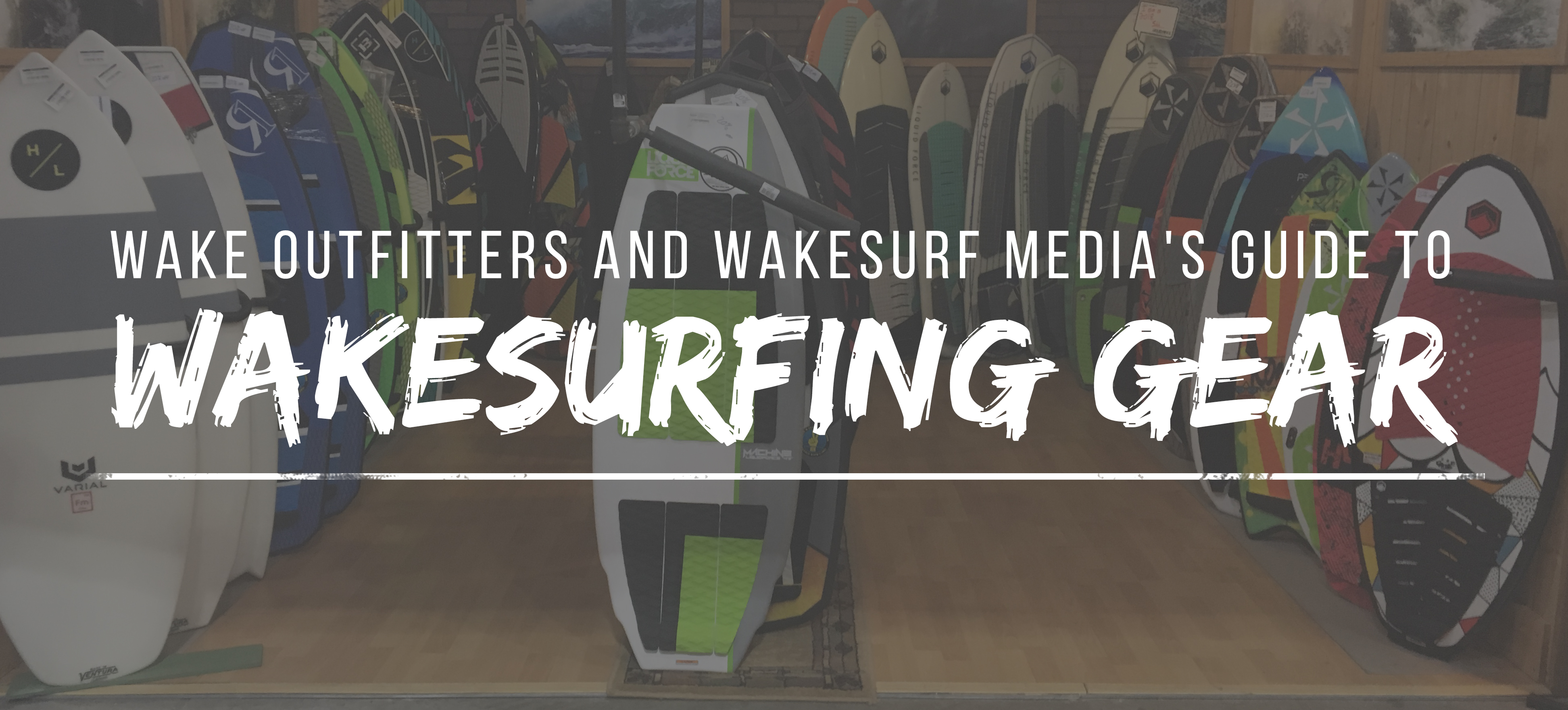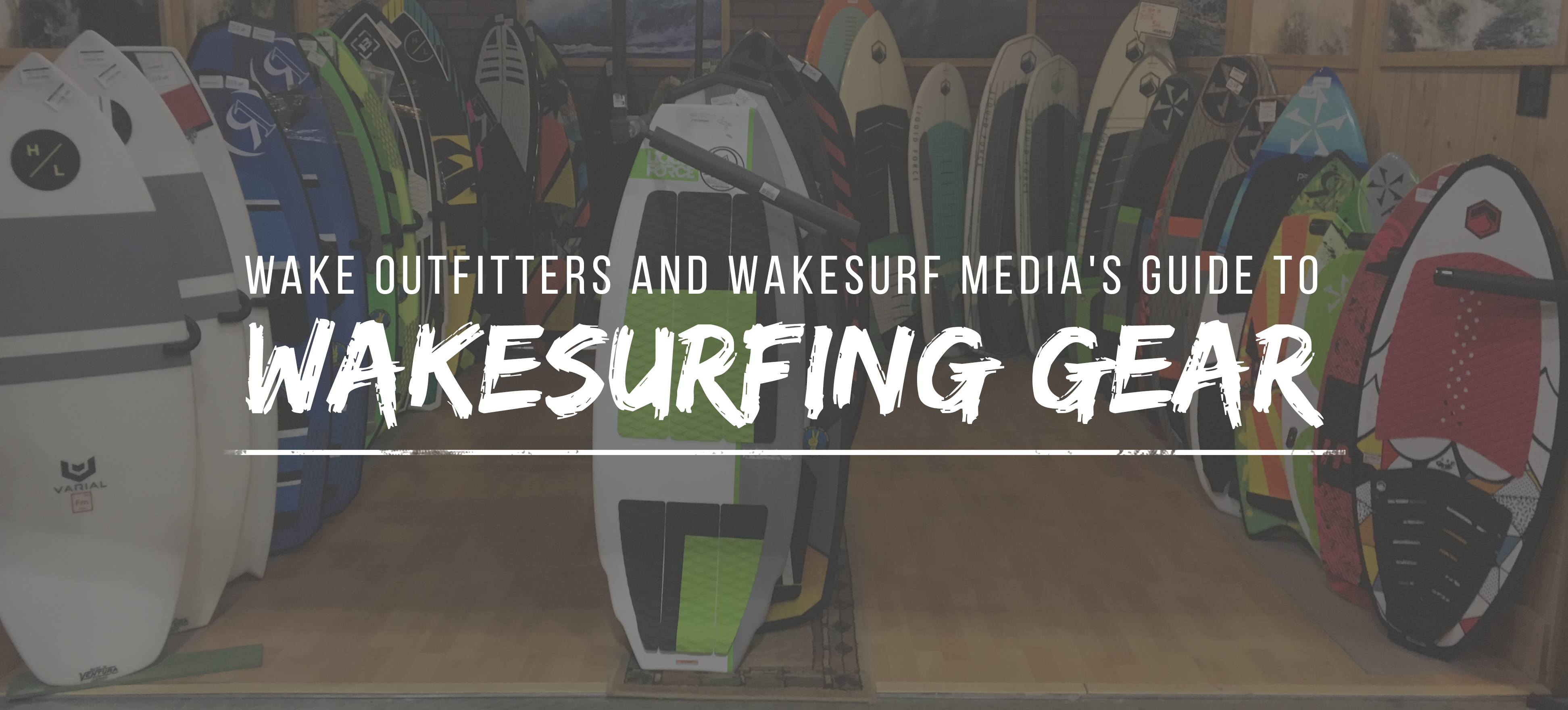
As you may have already figured out, when purchasing a wakesurf board there are many options. There are different brands, styles, lengths, materials… etc. So, what does all of that mean to you? Well… as you’ll see here… it depends. We’re going to break down a few of the most common areas we receive questions on and do our best to explain it as well as offer a few pros and cons when applicable. Please note: we’re wakesurfers, not authors, so a lot of this will be in our own terms.
Styles:
Just like nearly every aspect of wakesurfing, the style of board you ride is 100% personal preference. There is no “right style” for any individual. What works for you may not be preferred by other riders and vise versa. In wakesurfing, there are 3 main styles of boards: Surf, Skim, and Hybrid.
Surf: These boards usually look like shorter versions of ocean surfboards. They’re directional (meaning meant to be ridden only one way) and are typically made out of foam and fiberglass (although that’s not always the case). They usually utilize two or more large fins and offer rounded rails (sides of the board). These boards are able to generate good speed when pumping thanks to the larger fins but can sometimes make it difficult to stay with the wave without pumping or being on an edge. These boards are great for making big carves and getting air. Spins are doable on these boards, but the large fins can make that difficult at first.
Skim: These boards are typically oval in shape. If you can look at the top of a board and wonder “which way is the front?” you’re most likely looking at a skim style board. These boards can be made by hand or compression molded, it just depends on the manufacturer and model. They typically utilize a small single fin (or no fin at all) and have sharper rails with a flatter profile. Staying with the wave on these boards without pumping can, at times, be a little easier than surf style boards. However, you sacrifice some stability due to the smaller fin. These boards are great for spins and shuv based tricks (spinning the board underneath you while you jump).
Hybrid: These boards are the middle ground between Surf and Skim. Hybrid style boards typically use surf style fins but offer a flatter profile and sharper rails which are typical characteristics of a skim. They offer great stability thanks to the large fins which can help generate speed and offer ease of use thanks to the sharper rails and flat profile. Why doesn’t everyone use a hybrid? Our best guess is that since it does both styles pretty well it doesn’t do either of them to the absolute highest level.
Conclusion: Determine what style of riding you would like to do and pick the style based on that.
Materials:
Wakesurfboards are typically made one of two ways. Either a foam block is cut, shaped by hand, and fiberglassed or it’s cut, placed in a vacuum/press with other materials, and compression molded.
Fiberglass: This method is how ocean surfboards have been made for years. The shape is cut by hand using a template and then sanded smooth by an individual. The foam and fiberglass are both very lightweight which leads to a lightweight board. However, since this process is done by hand the cost is usually higher than a compression molded board. These boards are also considerably more fragile than compression molded boards. They are typically used by a single rider or a few riders that are around the same height, weight, and skill level.
Pros: Lightweight, High Performance
Cons: Cost (sometimes), Fragile
Compression Molded: This is the same process that manufacturers use when making the majority of wakeboards. Since most of the process is handled by machines the cost of these boards is usually less but it also tends to yield a heavier board. These boards also tend to be much more rigid than fiberglass boards which is why most boat-boards (boards anyone on the boat can try) are compression molded.
Pros: Cost, Durability, More riders can ride it
Cons: Performance (sometimes), Weight
Conclusion: Determine if this board is only for you or if others will be using it too. If it’s just for you and/or you and your friends that are the same size and skill level then fiberglass might be the way to go. If it’s for anyone who’s on the boat, compression molded might be the way to go. If your boat is usually full with people, kids, dogs, and/or beginners, a compression molded board might be best due to the durability factor.
Length:
Wakesurfboards typically range in height from 3’6″ to 5’6″. The right size for you will depend on your height, weight, ability, and wave size/push. Each manufacturer typically provides a size chart with their boards, so make sure to check for that before purchasing. Also, if you’re looking to buy a board the entire family can use, you’ll want something on the taller end of the spectrum. Remember, kids can grow into larger boards much easier than grownups can grow down into smaller boards. Larger boards offer more buoyancy but can sacrifice maneuverability for smaller riders.
Brands:
It seems like nearly all wakeboard manufacturers are also now selling wakesurf boars. In addition, there are many other small companies that sell hand-shaped boards as well as a few companies that sort of fall in the middle.
Wakeboard Manufacturers: Some of the companies that fall into this category are Connelly (formerly CWB), Hyperlite, Liquid Force, O’brien, Ronix, and Slingshot. They all typically offer a pretty wide range of styles and lengths and their prices can range from $299 to $1,200+. Some of the boards they offer are compression molded like a wakeboard and others are hand-shaped utilizing fiberglass. Think of this category as a mixed bag of nuts. Technically they’re all nuts, but they’re also way different and there’s usually one in there for everybody.
Pros: Cost (sometimes), Availability, Warranty (sometimes), Variety
Cons: Cost (sometimes),
Small Companies: Some of the brands that fall into this category are Soulcraft, Kanuk, and Tuk Tuk just to name a few. They tend to lean a little towards offering more surf style boards than skim style boards, but there is a good selection of skim style to choose from in here if you look hard enough. Most, if not all, of the boards in this category are shaped by hand by employees (or owners) of the company. With that being said, most are finished with fiberglass which we discuss in the Materials section above. Due to the fact of being hand-shaped, most of the companies can offer a little bit of flexibility in size and shape. Some of them can even make a board that’s specifically made for your height, weight, and riding style. The cost for the boards in this section typically ranges from $699 to $1,200+ and of course lean to the higher end if you’re getting custom work done.
Pros: Customizability, Performance
Cons: Cost (sometimes)
Middle-Sized Companies: Brands that fall into this category are Doomswell, Phase 5, and Victoria just to name a few. This category is slightly smaller sized mixed bag, but a mixed bag none the less. These companies usually offer boards that are made by hand but sometimes at a lower price point than the smaller companies. They also typically have more availability and stock on hand than small companies. The cost for these boards can range anywhere from $399 to $999+.
Pros: Cost (sometimes), Performance, Availability
Cons: Cost (sometimes)




